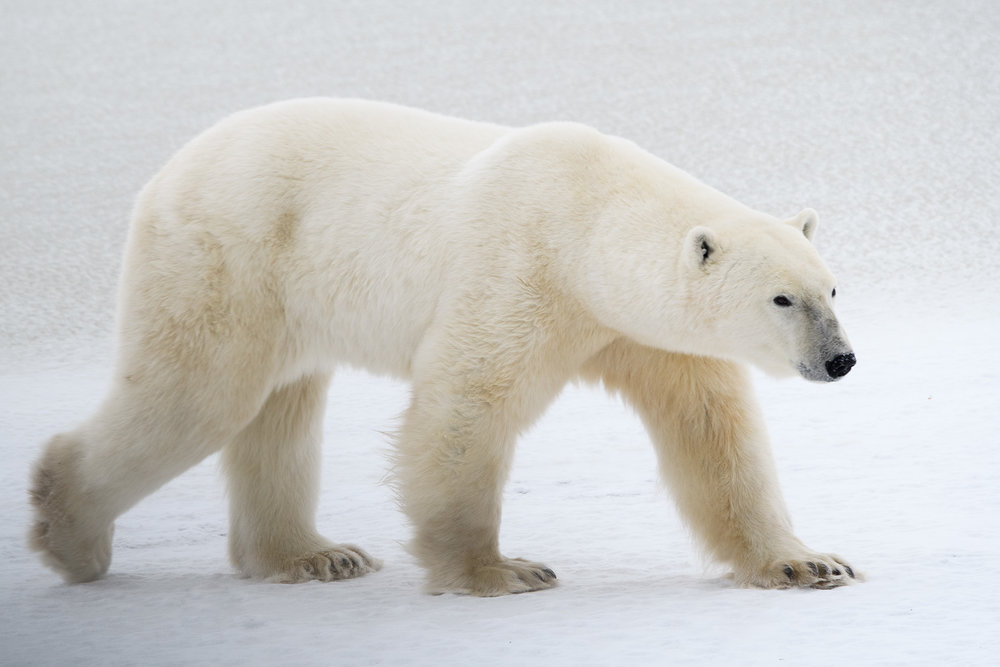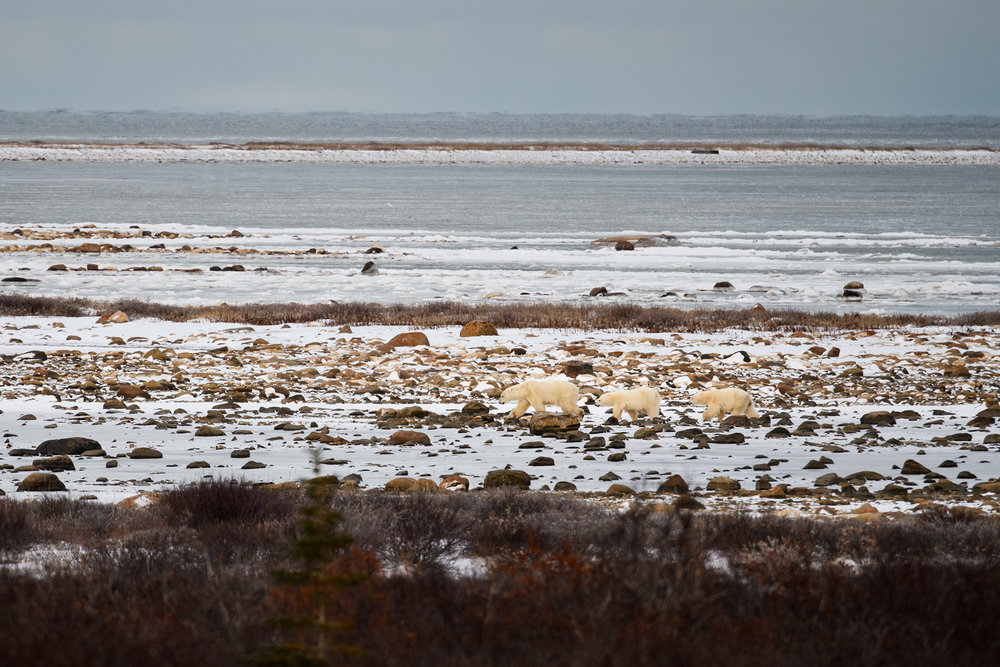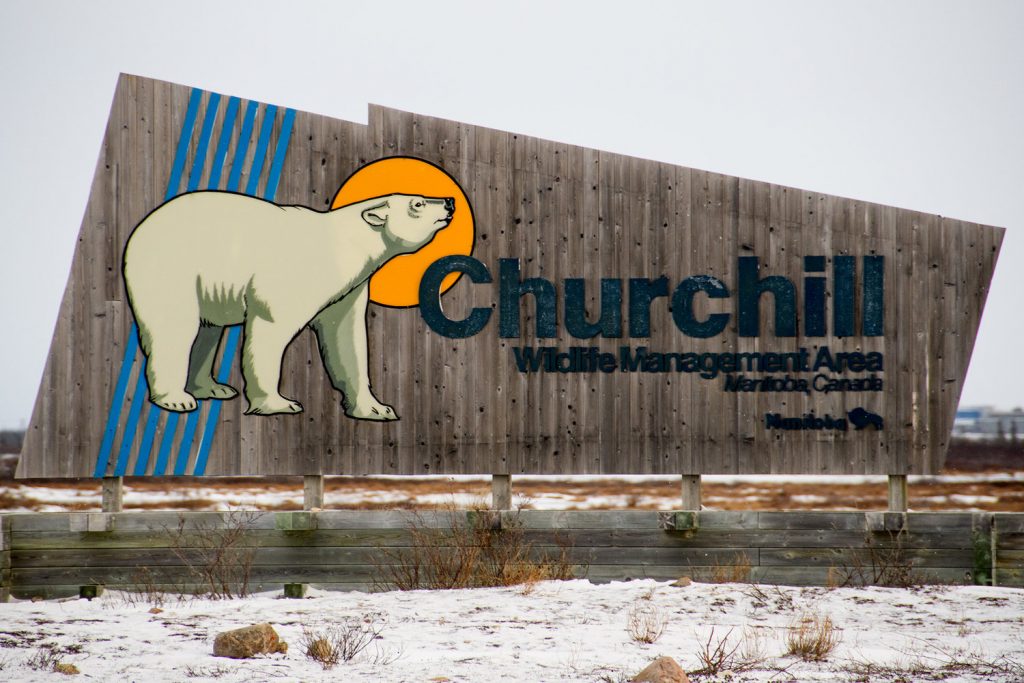Before northern lights season starts we wanted to post this blog series from Kathy and Jeff Klofft from Boston. The couple joined Natural Habitat Adventures last fall on a polar bear trip to Churchill and documented the trip in a blog by Kathy and some awesome photos from Jeff. Their blog site is Go See It Travel documenting their adventures around the USA and world. These next few days we will publish their account of Churchill as well as lots of photos from the experience! Enjoy.
Polar Bears of Churchill, Manitoba, Canada

Polar bear on the Churchill tundra. Jeff Klofft photo.
There are only a few places in the world to see polar bears in the wild. This opportunity is further restricted by the fact that generally solitary polar bears have a huge territory range for most of the year and most live year round out on polar ice that is virtually inaccessible to human beings. The bears eat primarily seals, hauling them out of their breathing holes in the ice with their enormous paws. Some of the bears living furthest south, such as the population near Churchill have to move to land for a few months when the ice melts each summer. One place where polar bears can be seen is in Churchill Manitoba in the Wapusk National Park in Manitoba, Canada. The park area was created on the shores of Hudson Bay, where polar bears wait for the ice in Hudson Bay to freeze each fall. The bears don’t eat during the summer, spreading out in Northern Canada or denning up to give birth to cubs, and are just waiting for the ice to form again, so they can go back out hunting.

A mother and her cubs wait for the ice to freeze on Hudson Bay to begin hunting seals. Jeff Kloft photo.
With a helicopter (like the researchers use) or lots of time living in bear country, a human might have an encounter with a bear during the 8 months, or so of the year that the bears are on ice, but most chances for bear and human encounters in Churchill will be in the late fall, mid October to mid November, when the bears start to literally lie on the shores waiting for the ice to from. Watching the bears on the shore waiting reminded me of this adaptation of a phrase about boiling water…”a watched bay never freezes!” But their month long wait on the shores of the Hudson Bay also provides a chance for human/bear encounters.

Polar bear warning sign in Churchill. Jeff Klofft photo.
For most of human history, polar bear/human encounters consisted of bears being hunted by Inuit people who used every part of the bear for survival, or dangerous encounters where bears sought human food or sled dogs and had to be destroyed to protect people and property. We learned from our guides that governments who operate in polar bear range states joined together to make agreements which would allow traditional hunting for people who rely on polar bears for survival, but protect them commercial hunting, which was decimating the numbers of polar bears in the wild. Since then, efforts were made to ensure bear/human conflicts could be avoided. Polar bear tourism was developed to happen only in the safest ways for both humans and bears. During our trip we heard from Elizabeth Kruger, World Wildlife Federation Arctic and Bering Sea Program Officer, that local residents have been empowered and trained to use bear patrols to redirect bears from populated areas, and local activists have changed garbage handling methods to discourage them from seeking human food. Our polar rover driver described that growing up in Churchill, the family would go out to the dump to see bears. Today, creative handling and containment of garbage have eliminated the bears at the dump and they roam where they belong, in the tundra. In Canada concessions were given to allow operators to allow polar bear tourism in the safest possible way.

Welcome to Churchill sign on the outskirts of town. Jeff Klofft photo.
So…bears are being conserved, but there are only a few weeks a year in Churchill when it’s practical to see polar bears, and the location to find them is still very remote…so how do you “go see it”?!
Tomorrow we will post more of the blog and answer the question above.

